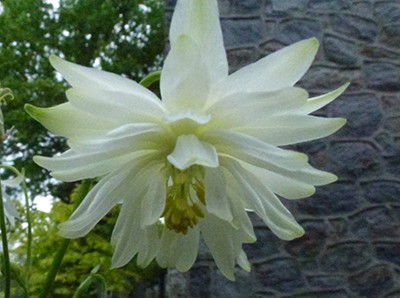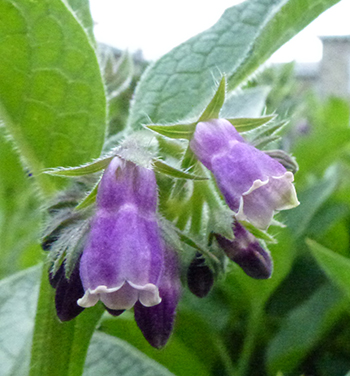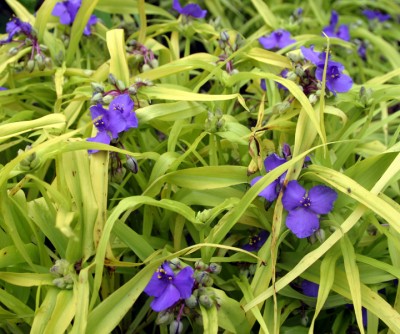Plant of the Week: May 23
Aquilegia x clematiflora ‘Green Apples’
Aquilegia was one of my first favorite plants, mostly because of how its characteristics were immediately recognizable. Our native woodlands are home to the species Aquilegia canadensis, which features red, pendulous flowers with long nectar spurs. It doesn’t look like any other wildflower. A member of the buttercup family, Ranunculaceae, Aquilegia comes from the Latin “aquila” meaning eagle, most likely referring to the shape of the nectar spurs. This particular Aquilegia is not native to our woodlands and has been cultivated to exhibit a double flower with many more petals than the species. The buds are lime-green and fade to apple-green and eventually age to creamy white. Blooming in May, June, and July it can be found on campus on the northeast corner of Kohlberg Hall. photo credit: J. Bickel
Symphytum x uplandicum
Comfrey has a wide range of uses from organic fertilizer to herbal treatment for broken bones. Sources say the Latin genus Symphytum comes from Greek symphis, meaning joining of bones and phyton, meaning plant. Often commonly referred to as “boneset” or “knitbone,” the hybrid species S. x uplandicum is the resultant cross between common comfrey, Symphytum officinale, and rough comfrey, Symphytum asperum. Being in the borage family, Boraginaceae, the flowers grow in a scorpioid cyme of pink to sky blue. This can be found growing in a large stand in the John W. Nason Garden. photo credit: J. Bickel
Tradescantia ‘Sweet Kate’
Tradescantia, also known as “spiderwort,” was named by Carl Linnaeus in honor of the 16th and 17th century, English father and son, gardeners/ botanists John Tradescant the Elder and John Tradescant the Younger. The common name refers to both the bearded filaments that support the bright yellow anthers and the scrambling growth habit. The cultivar ‘Sweet Kate’ was selected for its bright chartreuse foliage that persists in full sun, making for a very intense contrast with the deep purple-blue flowers. A few bright patches of this can be found in the Isabel Cosby Courtyard. photo credit: E. Lyons








No Comments